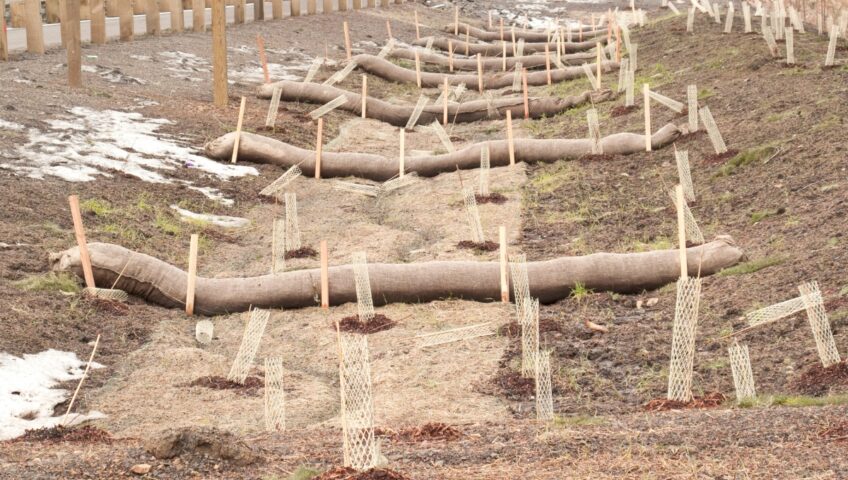When you think of earthworks, what comes to mind? Moving dirt? Clearing land? While these tasks are essential for construction, earthworks go far beyond that. When done thoughtfully, they can play a key role in protecting and even restoring our environment. At New Wave Earthworks, we’re not just about building structures—we’re about building a future where development and sustainability go hand in hand.
From site preparation services to land clearing, we believe in leveraging sustainable practices to minimize environmental impact while delivering exceptional results. Let’s explore how modern earthworks can contribute to environmental protection and the steps we take to make every project eco-friendly.
The Environmental Potential of Earthworks
Traditional earthwork practices often raise concerns about soil erosion, habitat destruction, and pollution. But modern approaches are changing the game. By integrating environmental construction services into earthwork projects, we can:
- Prevent Erosion: Retaining walls, vegetation planting, and erosion control techniques stabilize soil and prevent sediment runoff.
- Enhance Water Management: Features like detention basins and retention ponds help control stormwater while recharging groundwater supplies.
- Restore Habitats: Thoughtful land clearing combined with replanting efforts can rebuild ecosystems and support biodiversity.
- Reduce Carbon Footprint: Using energy-efficient machinery and recycling materials minimizes emissions and waste.
Earthworks aren’t just about shaping land—they’re about shaping a sustainable future.
Steps to Sustainable Earthworks
So, how do we make earthworks environmentally friendly? Here are the key steps we follow:
1. Thoughtful Site Preparation
Proper site preparation is the foundation of any eco-friendly project:
- Conduct detailed assessments to identify sensitive areas like wetlands or wildlife corridors.
- Use precision grading techniques to minimize soil disturbance during tasks like driveway preparation or field leveling.
- Implement erosion control measures such as silt fences or biodegradable mats to protect nearby water bodies.
2. Responsible Land Clearing
Land clearing doesn’t have to mean destroying habitats:
- Remove only what’s necessary for the project, preserving as much natural vegetation as possible.
- Recycle cleared materials like wood or stone for use in other parts of the project.
- Plan for replanting efforts post-construction to restore greenery and stabilize soil.
3. Advanced Water Management
Water is one of our most precious resources, so managing it wisely is crucial:
- Install systems like retention basins to capture runoff and prevent flooding.
- Use swales or bioswales to direct water flow naturally while filtering pollutants.
- Incorporate permeable surfaces in hardscaping projects (like patios or driveways) to allow water infiltration.
4. Recycling Materials
Recycling is at the heart of sustainable earthworks:
- Reuse excavated soil for backfilling or leveling instead of transporting it off-site.
- Repurpose concrete from demolition projects as aggregate for new structures like retaining walls or pathways.
This approach reduces waste, conserves resources, and lowers transportation emissions.
5. Eco-Friendly Machinery
Modern technology makes it easier than ever to reduce the environmental impact of heavy equipment:
- Use hybrid or electric machinery to cut down on fuel consumption and greenhouse gas emissions.
- Regularly maintain equipment for optimal efficiency and to minimize leaks or spills.
Real-Life Applications of Sustainable Earthworks
Here’s how sustainable earthwork practices make a difference in real-world scenarios:
Erosion Control in Sloped Areas
In regions prone to erosion, retaining walls built with recycled concrete blocks can stabilize slopes while blending seamlessly into the landscape.
Stormwater Management for Urban Development
In urban areas, installing detention basins helps manage stormwater runoff effectively, preventing flooding while creating green spaces that support local flora and fauna.
Habitat Restoration Post-Land Clearing
After clearing land for construction, replanting native vegetation restores habitats, improves air quality, and reduces heat island effects in urban settings.
How New Wave Earthworks Leads the Way
At New Wave Earthworks, sustainability isn’t just a buzzword—it’s a core part of how we work. Here’s how we’re making a difference:
- Comprehensive Planning: Every project starts with a detailed site assessment to identify environmental risks and opportunities for improvement.
- Innovative Techniques: From advanced grading methods to cutting-edge erosion control systems, we use the latest tools and technologies.
- Sustainable Materials: Whenever possible, we incorporate recycled or eco-friendly materials into our projects.
- Client Collaboration: We work closely with you to ensure your goals align with environmental best practices.
A Vision for the Future
Earthworks are more than just moving dirt—they’re about creating spaces that coexist harmoniously with nature. By adopting sustainable practices in tasks like land development, retaining wall construction, and even synthetic turf installation, we can build environments that benefit both people and the planet.
At New Wave Earthworks, we’re not just building structures; we’re building a future where development supports sustainability rather than compromising it.
Let’s Build a Greener Tomorrow Together
Your next project could be part of this vision! Whether you need help with site preparation, erosion control, or any other earthwork service, our New Wave Earthwork team is here to deliver results that protect the environment without sacrificing quality or functionality. We are committed to serving communities throughout Metro Vancouver and the Fraser Valley, including Richmond, Langley, Abbotsford, and North Vancouver. Contact us today to learn more about how we can make your project both successful and sustainable!


